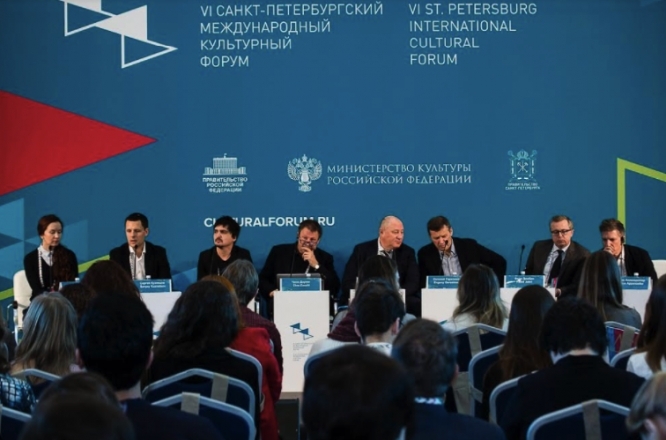Section Creative Environment and Urbanism at the 4th Saint Petersburg Cultural Forum gathered 24 experts from different countries and over 1000 listeners

This year, the section Creative Environment and Urbanism that for the second time took place at the Saint Petersburg Cultural Forum under the leadership of the chief architect of Moscow Sergey Kuznetsov, became the center of attraction for participants from all over the world.
The relevance and globality of the architectural problems was once again expressly demonstrated by the full halls at the events of the section and participation of experts from different countries of Europe, Asia, North and South America. The program of the 2017 section combined discussions, lectures, presentations and training formats, practical and theoretical issues of the development of the modern city.
On the first day it was opened by a plenary session devoted to mass architecture, in which experts from Moscow, St. Petersburg, Italy, Holland, Japan and Chile took part. In his opening speech, Sergey Kuznetsov said that today’s cities face the task of building a lot and quickly, but without creating monotonous and boring buildings, and, what’s more important, they need a comfortable, well-developed and interesting environment for all groups of residents.
The head of the Zucchi Architetti, Italian architect Cino Zucchi endorsed this idea saying that the modern industry and the level of architectural thought allow creating beautiful and diverse facades that interact well with each other even if the budget is restricted. Of course, facades are not the only feature of a high-quality project, but they form the visual appearance and identity of different areas.
The chief architect of St. Petersburg, Vladimir Grigoriev said that different cities move in different ways towards a new look of mass architecture. In particular, the Northern capital is searching for its own style. It will differ from the Moscow projects, considering the color scheme of the facades: the city has developed a catalog with a traditional palette for St. Petersburg, which will allow new buildings to fit into the same balanced picture characteristic of the historical districts of the city. An interesting discussion took place on the second day of the forum, at a session dedicated to the development of public spaces.
According to Mikhail Shvydkoy, Special Envoy of the President of the Russian Federation for International Cultural Cooperation, the perception of public areas in a today’s city is changing. If in the 50-60ss, such spaces often played an ideological role of places where the socialist dream was realized — VDNH was a vivid example — and were very crowded, today people feel uncomfortable in the crowd, they need individual services.
The aide to the President of the Republic of Tatarstan Natalia Fishman shared her experience in the implementation of the program for the creation of parks and public areas in regional cities. In her opinion, the creation of high-quality, well-maintained spaces changes not only the urban landscape, but also the self-awareness of people. Residents of large and small towns expect different results from the improvement. The population of megacities need green zones, where you can relax from the hectic city, whereas in small towns, such areas, on the contrary, become centers of social life. Therefore, people want to see tiled paving, good lighting and fountains.
The discussion of the third day Manifesto in Architecture merged well with the program of the section at the Cultural Forum, where not only architects but also theater and cinema figures discussed their vision of modern architecture and its future. Experts agreed that society is not always ready for new ideas, but they are necessary for the development of the city.
Film director Alexey German Jr. said that despite the generally suspicious attitude toward new experiences in architecture, the old is not always good, and the new is not always bad.
Christos Passas, CEO of Zaha Hadid Architects, agreed with this idea saying, «we all came here in casual trendy clothes, not in tuxedos, but when it comes to architecture, people are much more conservative than in fashion, they want to see something they got used to».
In addition to the sessions, the section featured a lecture by Cino Zucchi, a presentation of the Zaryadye Park and the book by Sergey Tchoban and Vladimir Sedov 30:70. Architecture as a Balance of Powers, as well as a training tour for students of architectural universities in Moscow.
The trip to the Cultural Forum was a reward for ten students who won at the Open City conference held in September this year under the auspices of Moskomarkhitektura and Sergey Kuznetsov. The youth were given the opportunity to attend all the parts of the section Creative Environment and Urbanism, as well as to go on excursions and listen to lectures from the leading architects of St. Petersburg. The trip was made possible by GK PIK that acted as the general partner of the Open City conference.



